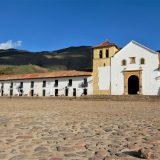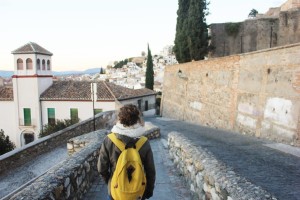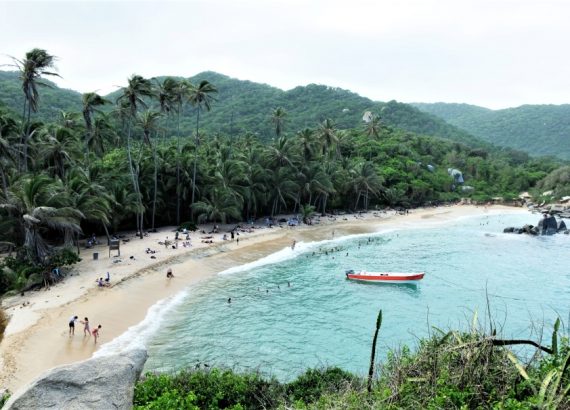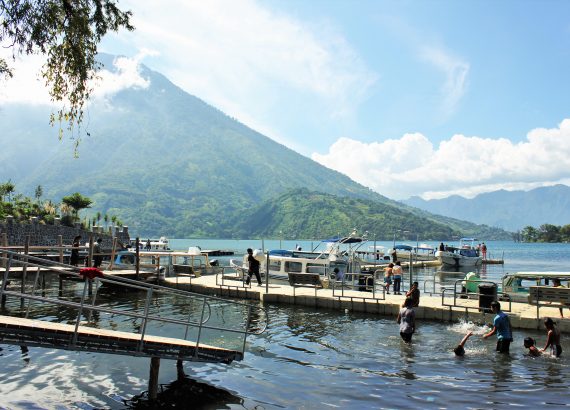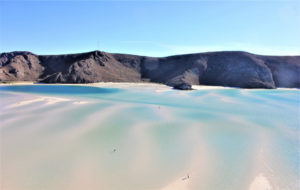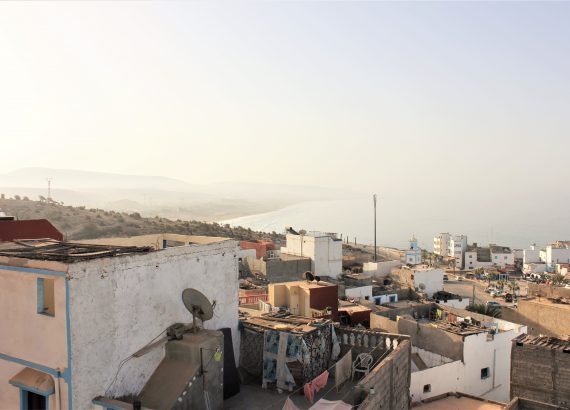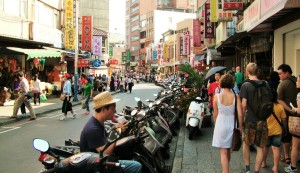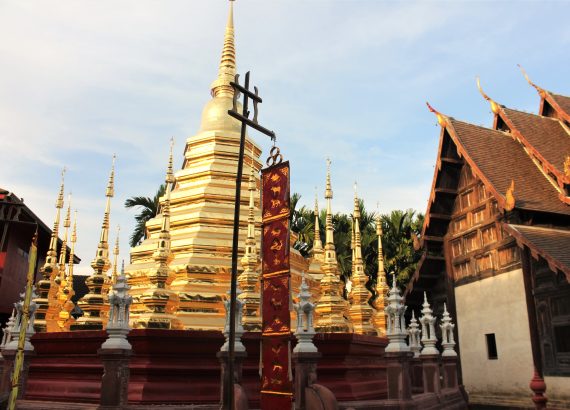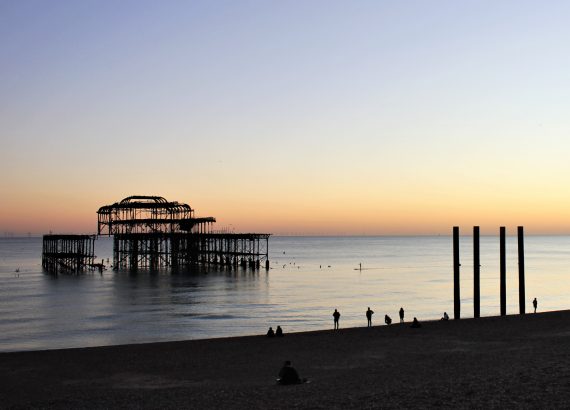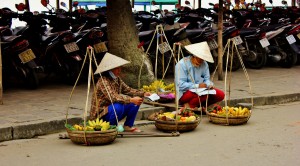A Practical Travel Guide to Bogota

Is Bogota just “a big city with big city problems” as one Colombian told us, or is there more to Bogota than first meets the eye?
We had originally planned to skip Bogota after hearing and reading that it’s gloomy and grey and there’s not a lot to do. As our travel planning got more in-depth and we fell in love with the idea of going to Villa de Leyva and El Cocuy, Bogota ended up earning itself a place on our itinerary as our base to get to those mountain towns.
We flew into Medellin at the start of our Colombia trip with high expectations about what a wondrous, digital nomad haven it would be. Our expectations must’ve been too high because we didn’t love Medellin like we thought we would. When we arrived in Bogota, our expectations were very low and, actually, we loved it. We just felt Bogota had a nicer vibe and was more liveable.
Despite the grey buildings and skies, Bogota’s reputation as the dangerous Colombia capital has started to lessen. Whilst you should still be vigilant with your valuables and not go exploring too far after dark (like in any big city), the city is much safer now and has some excellent neighbourhoods.

Things To Do in Bogota
We didn’t do that many activities in Bogota because we based ourselves here as a connecting point to get to Villa de Leyva, El Cocuy National Park and Salento. However, we did eat a lot in some of the best foodie spots in Bogota (see where to eat) and we caught a few of Bogota’s best things to do.
La Candelaria — Bogota’s Spanish colonial quarter has some of the city’s most beautiful architecture. Stop by the Primatial Cathedral of Bogota (the one you see in all the photos) and the Museum Quinta Bolívar, the colonial house where Simon Bolivar lived. You can take a free walking tour with Beyond Colombia to see the best parts of downtown.
Monserrate — Inconsiderate bad weather and a lack of time meant we missed Bogota’s most talked about sight of Monserrate. This hill stands 3152 metres above sea level. You can walk up the hill for sweeping views of the city, or take the cable car. Be careful not to go up here after dark, as apparently it draws an undesirable crowd once the sun goes down.
Gold Museum — Bogota’s Museo del Oro contains one of the largest collections of pre-Colombian gold objects in South America. If you’re interested in gold or the history of Colombia’s indigenous people, this museum is well worth a visit. Tickets are COP $4,000 per person, except on the museum when it’s free to visit. It can get busy, especially on Sundays, so give yourself plenty of time.
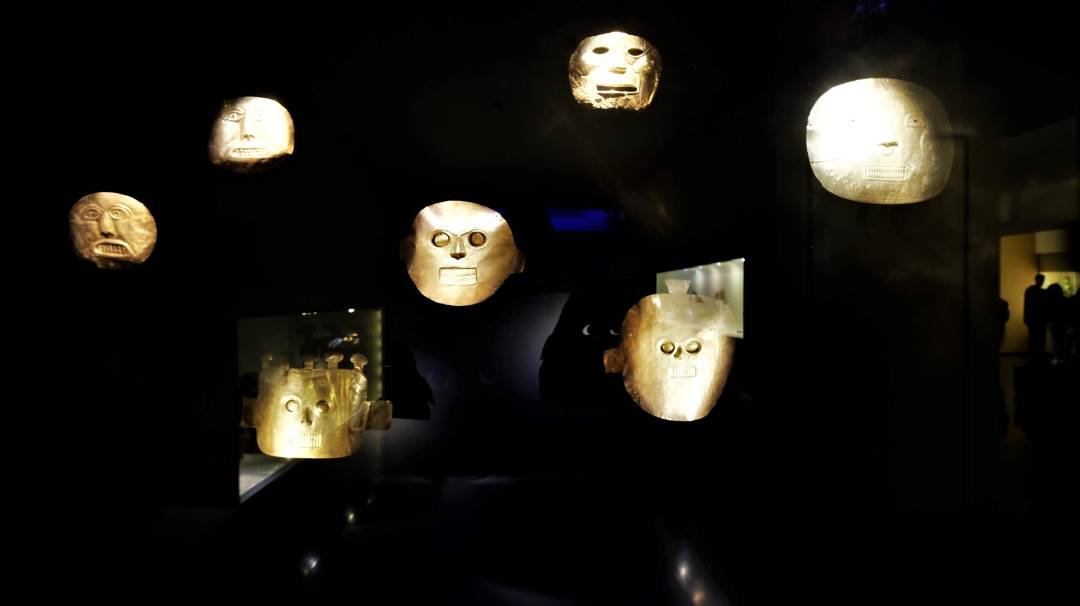
Bogota’s Best Neighbourhoods
La Candelaria — Bogota’s colonial district. Best for backpackers on a tight budget and those who want to be close to the main tourist sights in the city. It’s not the safest of neighbourhoods in Bogota, so be sure to stick to areas where there are hostels and restaurants, and stay off of the main roads. It’s also recommended you take taxis rather than public buses.
Zona Rosa — The party area of Bogota. We avoided this area because bright lights, late nights and thumping music are not our scene.
Chapinero — Bogota’s coolest neighbourhood with hipster cafes and bouldering walls. We stayed for a week in this neighbourhood and loved it. There’s a friendly vibe, lots of really great places to eat and you can walk around.
Parque 93 — The high-end neighbourhood of Bogota, and also the safest. Luxury apartment blocks and hotels, and fine dining restaurants characterise this area of the city.
Where to Stay in Bogota
Chocolate Hostel (La Candelaria) — This is a cheap and friendly hostel in the old town which also has some nicer touches — such as skylights and old wooden beams in some of the private rooms. We paid COP $52,000 for a private room (shared bathroom) and had a good night’s sleep. We couldn’t say no to breakfast at COP $4000 per person. While I wouldn’t call it “good” per se, the staff put such an effort into making breakfast, however haphazardly, that our whole table was in stitches of laughter.
Airbnb Apartamento Chapinero — This Airbnb doesn’t look like much, but it’s comfortable, clean and great value. The location is just across the road from an area of Chapinero blessed with the best hipster cafes, a ramen bar and a baked empanada place. The wifi is super fast and reliable, making the apartment a great place to work from. Get $48 off your first Airbnb booking here.
Where to Eat in Bogota
Best Cafes in Bogota
Mesa Salvaje (Chapinero) — Mesa Salvaje is a popular coffee shop that stays open late enough to serve beer and snacks. There’s outdoor seating, but you might be hard pressed to get a table during busy periods. They make a “meal of the week” which was an excellent roasted aubergine and rosemary oil dish when we were in town.
Mistral Panaderia Artesanal (Chapinero) — This bakery/cafe is a popular spot for local students to work and grab a bite to eat. You can get a falafel sandwich and a soup of the day for around COP $17,000. Consider grabbing a croissant or quiche for the road while you’re there.
Castaña (Chapinero) — Oven-baked empanadas in a comfortable, modern environment. We tried one with caramelised onions, one with mozzarella and another with ricotta and tomato. They were so good that we ended up buying a box of six more to takeaway! The coffee is also nice and strong, which isn’t always a given in a city where a watery “cafe tinto” is still the most popular brew.
Best Restaurants in Bogota
Wu Dumplings and Beer (Chapinero) — If, like me, you think there’s not much that beats a plate of dumplings and a cold beer after a long day, then you can’t miss Wu Dumplings. We tried the mushroom and tofu dumplings which are best enjoyed with a generous helping of chilli oil. Wu Dumplings isn’t cheap — our dumplings were COP $16,000 for five — but you can save a few pennies by getting one of their lunchtime deals or filling up on some sides.
Amen Ramen (Chapinero) — Amen Ramen is a hipster ramen bar in Chapinero. So hipster, in fact, that we had to ring the bell twice before they let us in. They have an ambitious menu including ma-po tofu ramen, kimchi ramen and vegetable ramen, which was served with seasonal local produce. Prices start from COP $28,000 per bowl, plus service charge and taxes.
Dos Gatos Y Simeone (La Candelaria) — A Mexican restaurant in La Candelaria (Bogota’s old town). We had fajitas which tasted almost identical to some of the very best we had in Mexico City — all that was missing was a squeeze of lime. They also had a good selection of craft beers courtesy of the Bogota Beer Company. We paid around COP $32,000 per person for a meal and a drink.
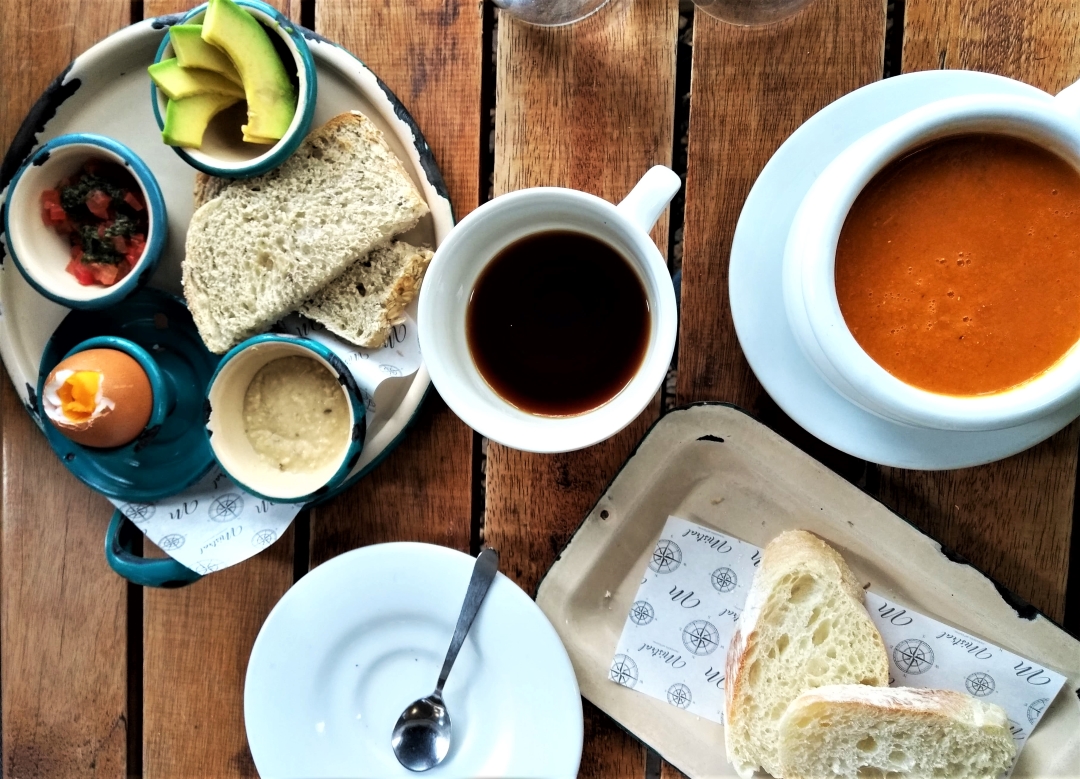
Lunch at Mistral Panaderia Artesanal
Is Bogota Safe?
Bogota is considered safe to visit, however you should still be careful in the city. Bogota is a city undergoing transformation. It’s turbulent past and the socio-economic situation of people in the city mean that street crime such as pick-pocketing and theft is still a problem. Pick-pocketing is particularly common on busy buses and on the TransMilenio. It’s better to take taxis directly to your destination instead.
There are many safe areas of the city but if you wander too many blocks in the wrong direction, you can end up on a less safe road. We were advised to avoid specific main roads and highways in the city when we stayed in both La Candelaria and Chapinero neighbourhoods. Surprisingly, these were sometimes the main roads in the area and the locals recommended we walk through the smaller side roads and neighbourhoods. A security guard on one road also told us to keep our phones in our pockets and not to have them out (even though they’re cheap handsets worth less than £50!)
Hotels, hostels and apartment blocks have security gates and will usually have a doorman. In 2011, there were a string of attacks on hostels but these have not been reported in more recent years. However, it’s known that thieves do sometimes still lurk outside of hostels in La Candelaria later at night. Ensure you book a hostel with a good level of security and check their recent reviews. We can recommend Chocolate Hostel, and we had no issues when we stayed here.
As with all big cities, it’s better to only carry the money you need with you and dress modestly. Check with the hostel/hotel/Airbnb owner where the safe and unsafe areas are, and don’t stay out too late at night. If you do stay out to enjoy Bogota’s nightlife, take a taxi back to your hostel/hotel door. We personally decided not to carry our camera (hence the lack of photos) often and did not stay out past 10PM (that’s not unusual for us).
Tourists should avoid the Ciudad Bolivar neighbourhood completely. This neighbourhood is a shanty town in the south of the city. Violence is very common here due to gangs, mafia, and at times FARC, the national ex-terrorist group of Colombia.

Getting In and Out of Bogota
Bogota Airport — Bogota’s El Dorado airport has plenty of domestic and international flights, including direct flights to London Heathrow. It’s easy to get an authorised taxi from the airport to the old town (La Candelaria). It should cost you around COP $40,000. Alternatively, your hotel might be able to arrange a transfer from the airport. This should cost about COP $60,000.
Bogota Bus Station — There are a number of bus terminals in Bogota. Terminal de Transporte S.A. has plenty of domestic and international buses. A taxi from La Candaleria to the terminal should cost you about COP $20,000.
Bogota to Villa de Leyva — We took a Libertadores bus from Terminal De Transporte Salitre out of Bogota to Tunja for COP $22,000, then changed for a bus to Villa de Leyva (another COP $7000). Direct buses do run and we’d recommend taking one if you can as they’re quicker, but they are less frequent. The journey is 3-5 hours.
Bogota to Salento — We took a bus from Terminal De Transporte Salitre in Bogota to Armenia for COP $40,000. Buses leave every quarter past the hour from Bogota. The bus took 8 hours to reach Armenia. Here we changed for a local minibus to Salento. This mini bus cost COP $7500 and took about an hour.
Some of the links in this post are affiliate links, which help to run Charlie on Travel. None of these links will ever cause you to pay an additional amount. I only link to brands I personally use and like.
